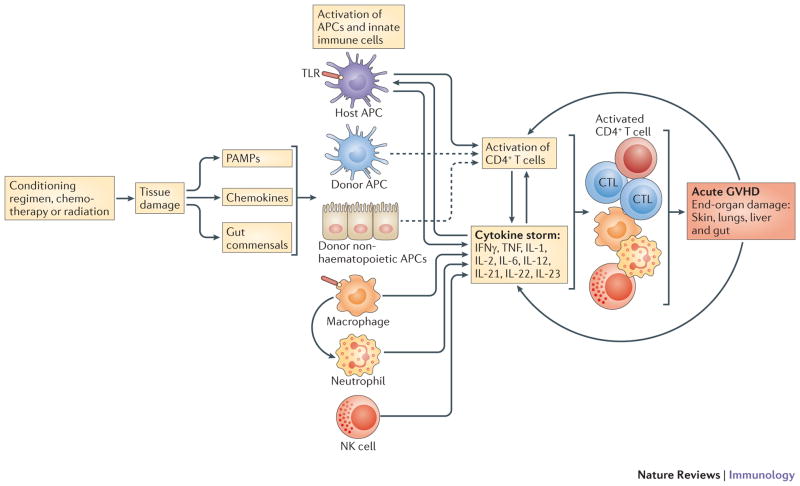Figure 1. Overall aGVHD cascade.
Initiation and maintenance of aGVHD has been conceptualized into 4 phases with feedback loops that self-sustain the process. Although the effect of conditioning phase in aGVHD is not absolutely necessary, in many of the models it activates APCs, via tissue destruction, and improve APC capacity. It also, through release of gut bacteria, PAMPS and chemokines, can activate cellular components of innate immune system that can participate in direct tissue damage and contribute in cytokine storm. Host hematopoietic APCs have perhaps the most important role in initiation of GVHD, but this may depend on the model and the potential role of recipient APCs as well host non-hematopoietic APCs should not be ignored. Following antigen presentation, a strong cytokine response is initiated, promoting greater antigen presentation and recruitment of Teffs, and innate immune cells further contributing to the inflammatory cytokine milieu. Finally, the Teff cells, NK cells, macrophages and pro-inflammatory cytokines (e.g. TNF-α), will result in end organ damage, clinically recognized as aGVHD in the skin, lung, gut and liver. The resulting tissue damage, if not treated, will further escalate the disease, spiraling up the process to higher and more severe stages of GVHD pathology, which is extremely difficult to control.

